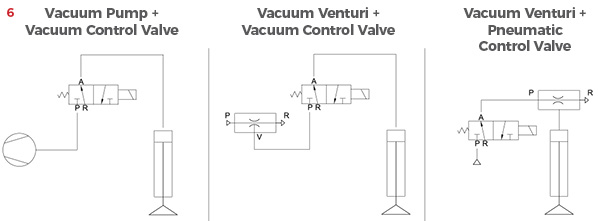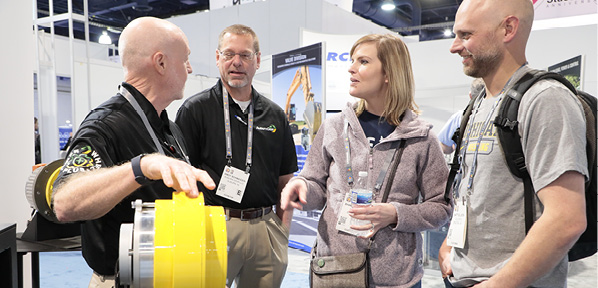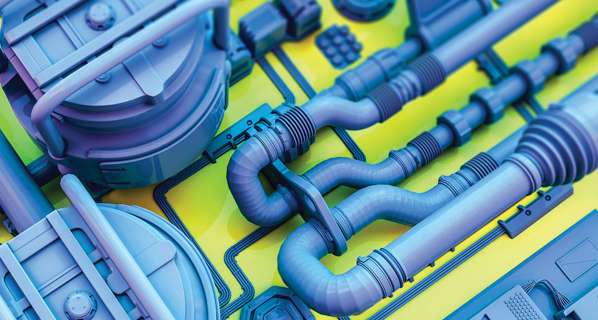Which Hydraulic Fluid?
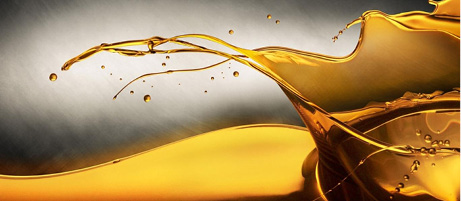
Most hydraulic systems will operate satisfactorily using a variety of fluids. These include multigrade engine oil, automatic transmission fluid, and more conventional anti-wear hydraulic oil. But which type of fluid is best for a particular application? While it is not possible to make one definitive recommendation that covers all types of hydraulic equipment in all applications, the following are some of the factors that need to be considered when selecting (or changing) a hydraulic fluid.
Multigrade or Monograde
Viscosity is THE single most important factor when selecting a hydraulic fluid. It doesn’t matter how good the other properties of the oil are; if the viscosity grade is not correctly matched to the operating temperature range of the hydraulic system, maximum component life will not be achieved. Defining the correct fluid viscosity grade for a particular hydraulic system involves consideration of several interdependent variables:
- Starting viscosity at minimum ambient temperature
- Maximum expected operating temperature, which is influenced by maximum ambient temperature
- Permissible and optimum viscosity range for the system’s components
Typical minimum permissible and optimum viscosity values for different types of hydraulic components are shown in Table 1.
If the hydraulic system is required to operate in freezing temperatures in winter and tropical conditions in summer, then it’s likely that multigrade oil will be required to maintain viscosity within permissible limits across a wide operating temperature range. If fluid viscosity can be maintained in the optimum range, typically 25 to 36 centistokes, the overall efficiency of the hydraulic system is maximized (less input power is given up to heat). This means that under certain conditions, the use of a multigrade can reduce the power consumption of the hydraulic system. For mobile hydraulic equipment users, this translates to reduced fuel consumption.
There are some cautions when using multigrade fluids in hydraulic systems. The viscosity index (VI) improvers used to make multigrade oils can have a negative effect on the air separation properties of the oil. This is not ideal, particularly in mobile hydraulic systems that typically have a relatively small reservoir with corresponding reduction in de-aeration characteristics.
And if a multigrade not specifically formulated for use in hydraulic systems, such as engine oil, is used, the high shear rates and turbulent flow conditions often present in hydraulic systems destroy the molecular bonds of the VI improvers over time, resulting in loss of viscosity.
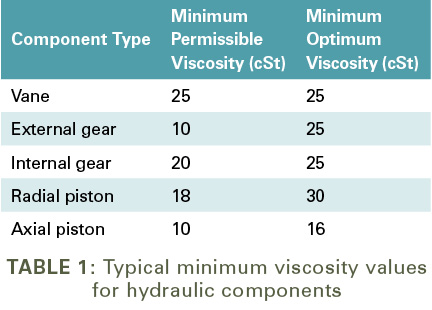
For this reason, if a multigrade engine oil is used in a hydraulic system, it is recommended that the hydraulic component manufacturers’ minimum permissible viscosity values (Table 1) be increased by 30% to compensate for VI improver sheardown.
Either way, if the hydraulic system has a narrow operating temperature range and it is possible to maintain optimum fluid viscosity with a monograde, it’s wise to “keep it simple” and not use a more complex multigrade oil.
Detergent or No Detergent
DIN 51524; HLP-D fluids are a class of anti-wear hydraulic fluids that contain detersive and dispersive additives. The use of these fluids is approved by most major hydraulic component manufacturers. Detergent oils have the ability to emulsify water, and disperse and suspend other contaminants such as varnish and sludge. This keeps components free from deposits, but means that contaminants are not precipitated out; they must be filtered out. These can be desirable properties in mobile hydraulic systems, which, unlike industrial systems, generally have reduced opportunity for the settling and precipitation of contaminants in the reservoir due to its relatively small volume.
The main caution with these fluids is that they have excellent water emulsifying ability, which means that if present, water is not separated out of the fluid. Water accelerates aging of the oil, reduces lubricity and filterability, reduces seal life, and leads to corrosion and cavitation. Emulsified water can be turned into steam at highly loaded parts of the system. These problems can be avoided by maintaining water content below the oil’s saturation point at operating temperature.
Anti-Wear or No Anti-Wear
The purpose of anti-wear additives is to maintain lubrication under boundary conditions. The most common anti-wear additive used in engine and hydraulic oil is Zinc dialkyl dithiophosphate (ZnDTP), although this is slowly changing due to environmental considerations given that zinc is a “heavy” metal. The presence of ZnDTP in the oil is not always seen as a positive, due to the fact that it can chemically break down and attack some metals, and reduce filterability. Stabilized ZnDTP chemistry has largely overcome these shortcomings, making it an essential additive to the fluid used in any high-pressure, high-performance hydraulic system, such as those fitted with piston pumps and motors. A ZnDTP concentration of at least 900 ppm can be beneficial in mobile applications and is recommended by some OEMs.
Conclusion
As far as hydraulic oil recommendations go, for commercial reasons relating to warranty, it is wise to follow the equipment manufacturer’s recommendations. In some applications, however, the use of a different type of fluid to that originally specified by the equipment manufacturer may increase hydraulic system performance and reliability. But always discuss the application with a technical specialist from your oil supplier and the equipment manufacturer before switching to a different type of fluid.

